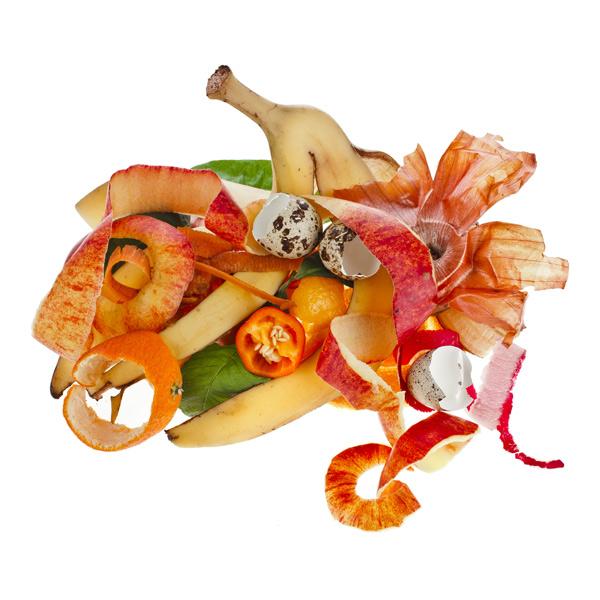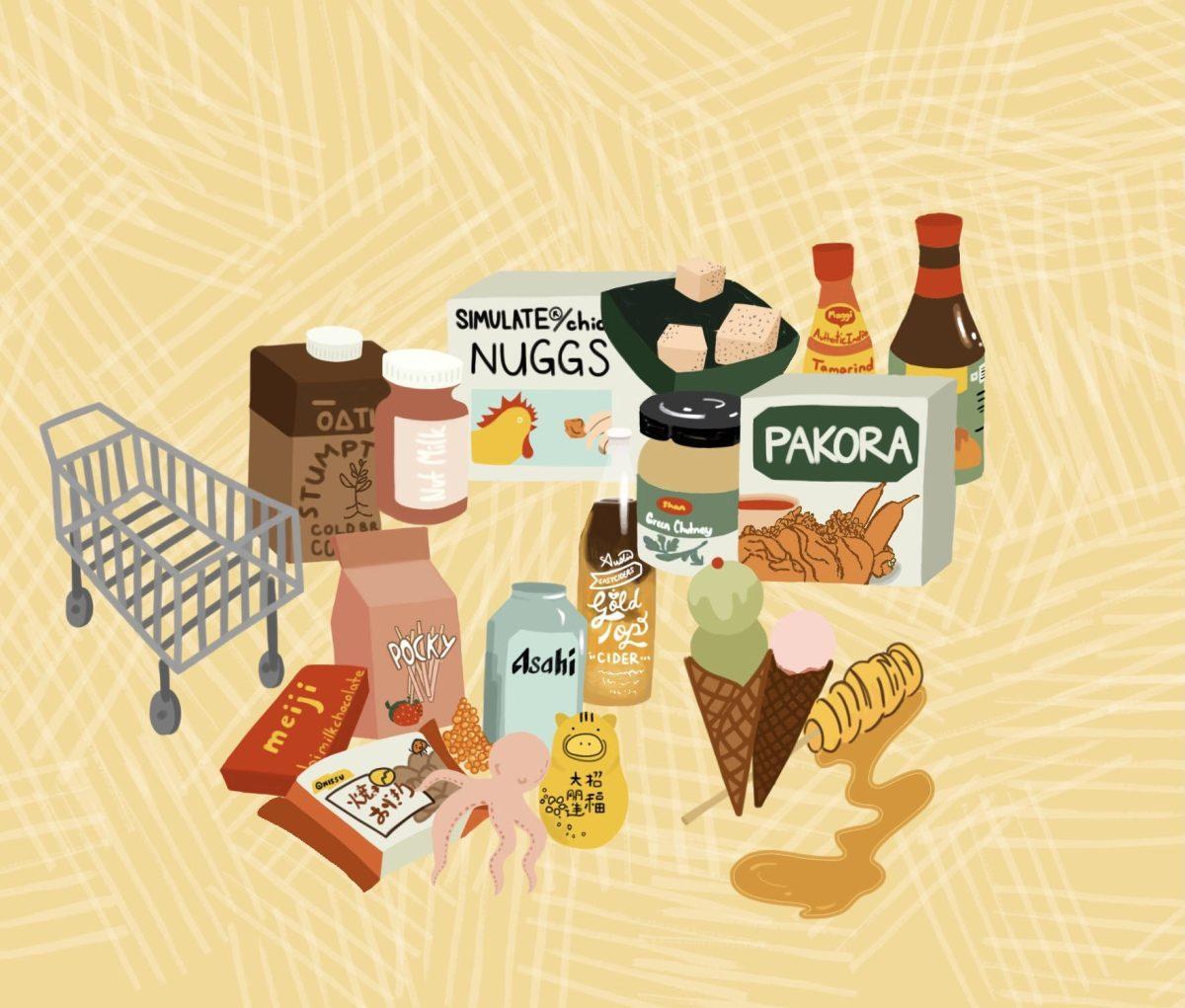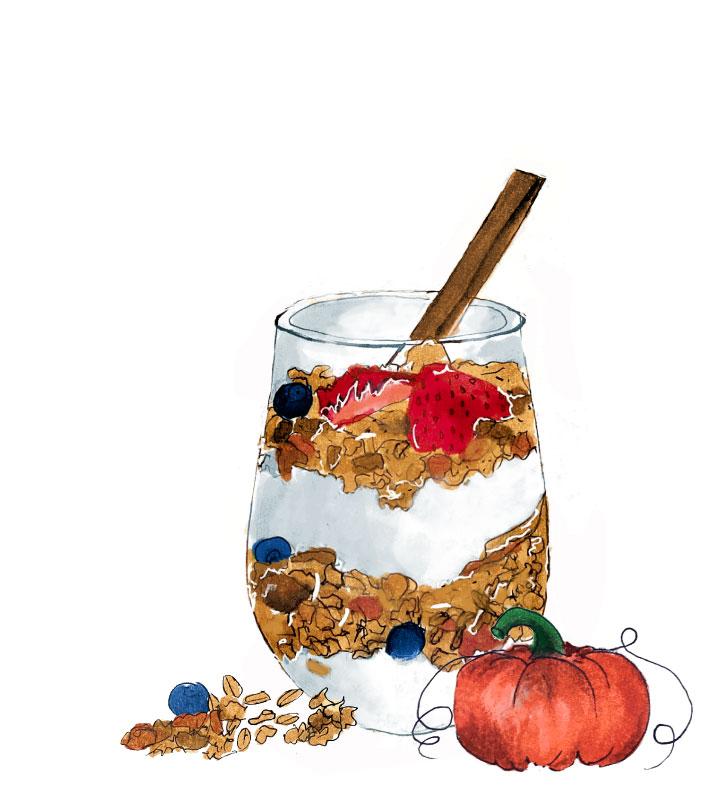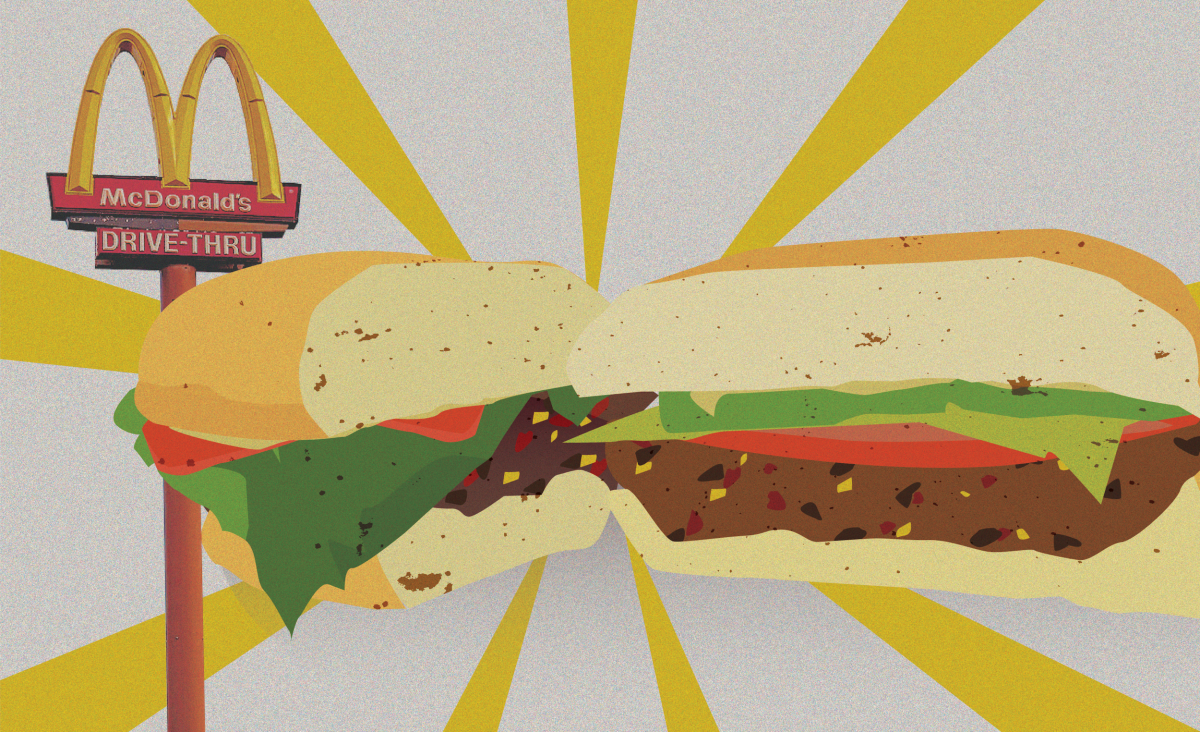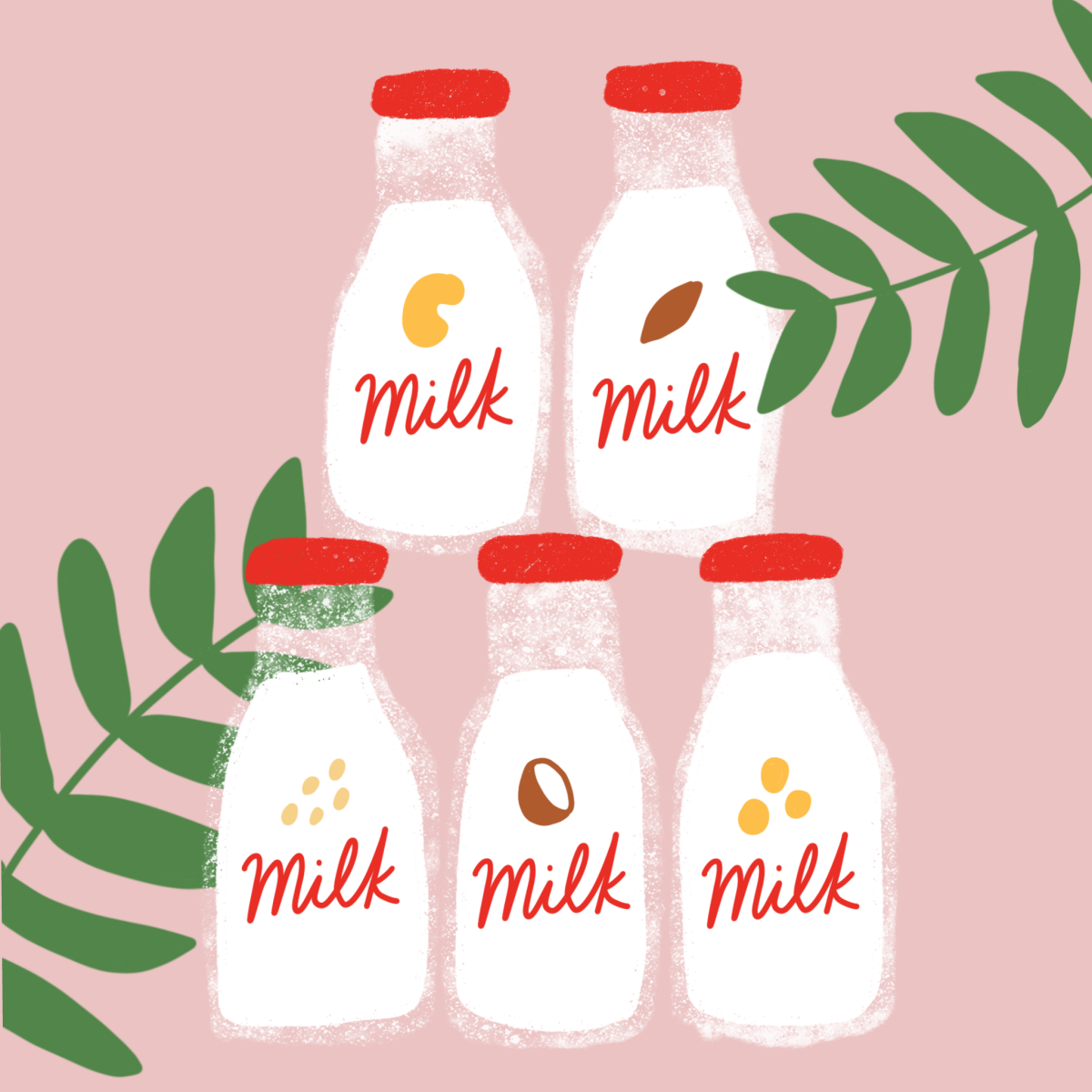Here are some ways to cut down and reduce/reuse/recycle to offset on the gargantuan amount of food waste we produce every day.
Story by Chandler Gibson
Photo courtesy of Bluewater Recycling Association
Every day, people throw away tons of food. Literal tons. 36 million tons, to be exact. According to the Pew Research Center “less than 5% of food waste … [gets] composted or otherwise recovered.” In fact, according to research from the Natural Resources Defense Council, “the average American household of four is throwing away $120 each month in the form of uneaten food.”
There are plenty of things this could be attributed to: overproduction, underproduction, lack of or otherwise unenforceable sustainability expectations for farmers, not enough ethical and seasonal sourcing, trade wars, climate change, overpopulation and many more.
The point isn’t to place blame or pinpoint the exact moment where this all went wrong . The point is to offer ways for college students, arguably one of the most unintentionally wasteful groups on the planet, to reduce their waste, and use what they would otherwise toss.
It all starts with your freezer.
Start with a bag (a freezable zipper bag is probably your best bet) or better yet a glass jar while we’re talking about sustainability. Whenever you cook or whenever produce goes bad, put it in your container and pop it in the freezer to prevent the scraps from spoiling before you can utilize them. For instance, if you make ratatouille, fill it with the ends and peels of the zucchini, squash, eggplant, citrus and herb stems. Maybe you fill it with the peels from bananas or the skins from those Halo oranges that you swore you’d eat the whole 3-pound bag of that H-E-B had on sale. It’s not just produce, either. Hold on to those bones from poultry, fish, and red meat to make a homemade stock or add a delicious heartiness to whatever you make.
Here are five ways to utilize those scraps beyond composting.
HARVEST BROTH
This one is likely the easiest and most useful of any food scraps transformations.t. Transform scraps like squash, zucchini, eggplant, lemon, lime, mushroom stems, and red onions for a warm, hearty broth that rivals any expensive vegetable stock.
Makes: 8 servings, varying based on use
INGREDIENTS
-
4-5 cups of mixed vegetable scraps
-
6-10 cups of water
-
2-3 tbsp. salt
INSTRUCTIONS
-
Accumulate the frozen waste, take a moment to be proud, then decide what kind of broth to make.
-
Add the vegetable scraps to a large stockpot.
-
Add the water and salt. The water should be just enough to cover the vegetables in the stockpot
-
Bring to a boil and then reduce to a simmer for 2 hours.
HERB STEM TABBOULEH
Tabbouleh is a common Mediterranean lemon salad-like side dish enjoyed in Greece, the Middle East, with variations in North Africa. It features herbs as a base and is usually combined with bulgur.For this version, we are using chopped herb stems, which actually have more flavor than the leaves, but y’all aren’t ready for that conversation yet.
INGREDIENTS
-
2 cups parsley stems, dried and chopped
-
½ cup other herb stem, like mint or basil
-
½ cup cherry tomatoes, small dice
-
2 cups broth
-
(ORANGE Magazine Pro Tip™: use the vegetable broth listed above for extra Earth-saving points!)
-
-
2 tbsp. lemon juice
-
½ cup quinoa, cooked
-
2 tbsp. olive oil
-
1 tbsp. salt
INSTRUCTIONS
-
Combine the diced cherry tomatoes and a tablespoon of salt in a small bowl. Let sit for about 20 to 30 minutes to release some of their water. Drain afterwards.
-
Dry the herbs out on paper towels (or a clean kitchen towel for extra sustainability points!) before chopping. Alternatively, dry in the oven at 200℉ with the door open slightly until dry.
-
-
Cook the quinoa in water or stock according to the package instructions.
-
Stir in the chopped herb stems, tomatoes, lemon juice, olive oil and more salt to taste, if needed.
-
Serve cold or room temperature.
CITROCELLO & ITALIAN SODA SYRUP
In Italy, drinking alcoholic digestifs like limoncello, arancello, pompelmocello and grappa are common following large, family-style meals. When made right, they taste light, fresh and can be the perfect end to an evening laughing with family and friends. The addition of tonic, lemon-lime soda or sparkling water can smooth out the potent alcohol flavor for a trendy and refreshingly simple cocktail. For those who do not drink alcohol, Italian soda syrups provide the same fun and group-friendly refreshment.
INGREDIENTS
-
Peel of about 5 citrus fruits of your choice, such as clementines or lemons
-
1 cup water
-
1 cup cane sugar
-
250 mL vodka or Everclear (optional)
INSTRUCTIONS
-
Peel the oranges or other fruits, and try to avoid as much of the bitter white pith as possible. It can make the drink unpalatable.
-
Put the peels into an appropriately-sized jar or bottle.
-
Combine the sugar and water in a saucepan and heat until clear.
-
Let rest until cool, and combine in your storage container with the peels.
-
Optional: Add alcohol to your Italian soda syrup base to make the citrocello.
-
Close your container and put it in the fridge for a week without opening it to allow it to infuse.
-
Serve chilled with a variety of sparkling waters.
STALE BREAD CROUTONS
These croutons are great for salads, soups or even in a panzanella. However, we repeat, moldy bread is never safe to eat. Bread is soft and mold has tendrils that penetrate through it, so even though mold can be eaten around, mold tendrils can rarely be seen. If the bread is moldy, compost it, do not make it into croutons. If the bread is just stale, and lacking in visible mold, please, by all means, continue.
INGREDIENTS
-
Stale bread, as much as you’d like, cut into 1-inch cubes
-
Canola oil
-
Salt and pepper to taste
INSTRUCTIONS
-
Slice the bread into roughly 1-inch cubes.
-
Fill a pot with the canola oil and heat over medium-high to between 375℉ and 400℉.
-
Drop the bread in a few at a time so they brown nicely, and pull them out to rest on a paper-towel lined plate.
-
Finish them with salt to taste, and add to soups or salads for a rustic, homemade touch.
COFFEE GROUNDS BODY SCRUB
This body scrub recycles the same restorative power of coffee into your self-care regimen and helps keep you looking as good as coffee makes you feel. Whether this recipe is made in large or small batches, it’s just as rejuvenating.
INGREDIENTS
-
¼ cup used coffee grounds
-
3-4 tbsp. organic coconut oil, melted
-
1 tbsp. honey or agave (optional)
INSTRUCTIONS
-
In a small bowl, add all of the ingredients and stir to combine. If too loose a mixture, add more coffee grounds; if too dry, add more coconut oil and/or honey or agave.
-
Keep in a container in the bathroom, and apply before taking a shower.
NOTE: All of the above recipes can be made with accumulated food waste or with fresh ingredients. Please use reasonable judgement when deciding when to use or not use produce, as incorrect handling of food waste, as with all food, can cause foodborne illnesses. If it looks too sketchy to use, please, from all of us at ORANGE Magazine, just compost it instead.































